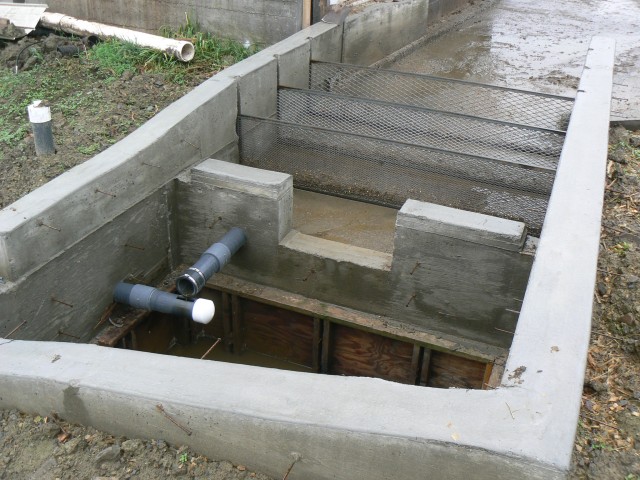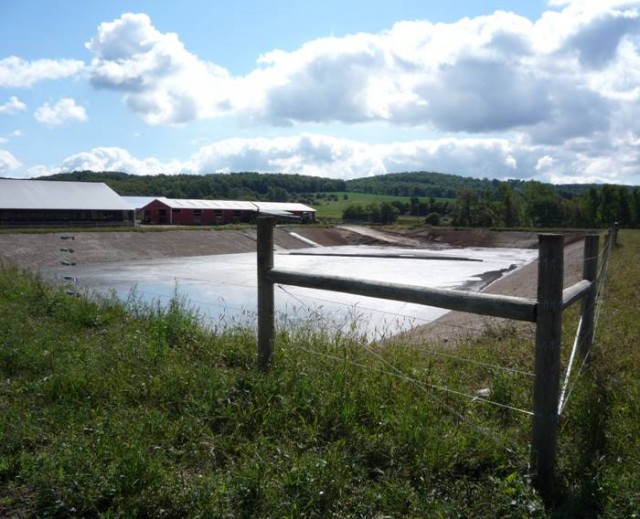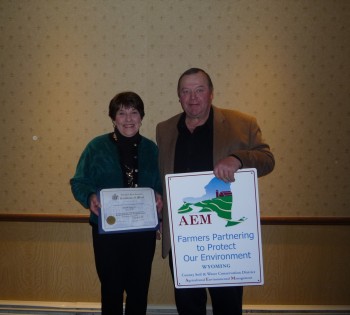AG - Agricultural Environmental Management (AEM)
What is AEM?


Agricultural Environmental Management (AEM) is a voluntary incentive-based program that helps all farmers operate environmentally sound and economically viable businesses. The AEM Program coordinates existing agricultural and environmental conservation agencies and programs as well as agribusiness, to provide one-stop shopping for services. All agricultural counties in New York State are currently conducting ARM programs and participation has grown to include nearly 8,000 farms.
Why AEM?
The AEM Program helps farmers address sources of water pollution originating from agricultural activities by:

- Assessing environmental concerns associated with their farming operations
- Documenting current stewardship
- Developing management plans
- Implementing environmentally sound practices to address identified concerns
- Complying with state and federal environmental regulations
Local management of program activities allows AEM to respond effectively to side-specific agricultural practices, local environmental concerns, and individual business objectives.
How does AEM work?
AEM uses a five tiered approach to help farmers develop and implement effective and profitable farm plans. Tier 1: A short questionnaire surveys current farm activities, farmer’s future plans, and identifies potential environmental concerns. Tier 2: Farming operation worksheets document current environmental stewardship while identifying and prioritizing environmental concerns. Tier 3: Local teams of resource professionals help farmers develop solutions to specific environmental concerns identified in Tiers 1 and 2. Plans are designed with a farm’s mission, goals, and objectives in mind. Tier 4: Agricultural agencies and consultants provide farms with technical educational, and financial assistance to implement Best Management Practices. Tier 5: Ongoing evaluations help ensure that AEM helps protect both the environment and the viability of farm businesses.
AEM Benefits the Farmer & the Environment

AEM helps farmers:
- Manage manure and fertilizer nutrients
- Manage barnyard run-off and process wastewater
- Conserve soil
- Protect drinking water
- Improve neighbor and community relations
- Promote the economic and environmental benefits of farmland to the community
- Comply with environmental regulations
- Be consistent with permit requirements for Concentrated Animal Feeding Operations (CAFOs).
What Assistance Does AEM Provide?
AEM links farmers with program partners to address specific environmental issues on the farm. Financial Assistance Cost sharing for environmental farm plans and BMP implementation can come from:
- NYS Agricultural Nonpoint Source Abatement and Control Program (ANSACP)
- NYS Farmland Viability Grants
- NYS Energy Research & Development Authority grants (NYSERDA)
- USDA Farm Bill Programs such as the Environmental Qualities Incentive Program (EQIP) and the Conservation Reserve Program (CRP)
Technical Assistance & Education
- Environmental plan development
- Best Management Practice design & installation
- Education programs to help farmers operate viable and environmentally sound farms
AEM Objectives

- Provide a voluntary, incentive based program to address water quality concerns on farms
- Coordinate a watershed based approach
- Document environmental stewardship
- Adopt Best Management Practices (BMPs) consistent with farm resources.
- Increase farmers’ awareness of their potential impact on the environment
- Increase non-farmer awareness of agriculture’s multiple environmental benefits
- Address neighbor relations
To learn more about AEM, please contact:
- The Wyoming County Soil and Water Conservation District
- The USDA Natural Resource Conservation Service
- Cornell Cooperative Extension
- A Certified AEM Planner